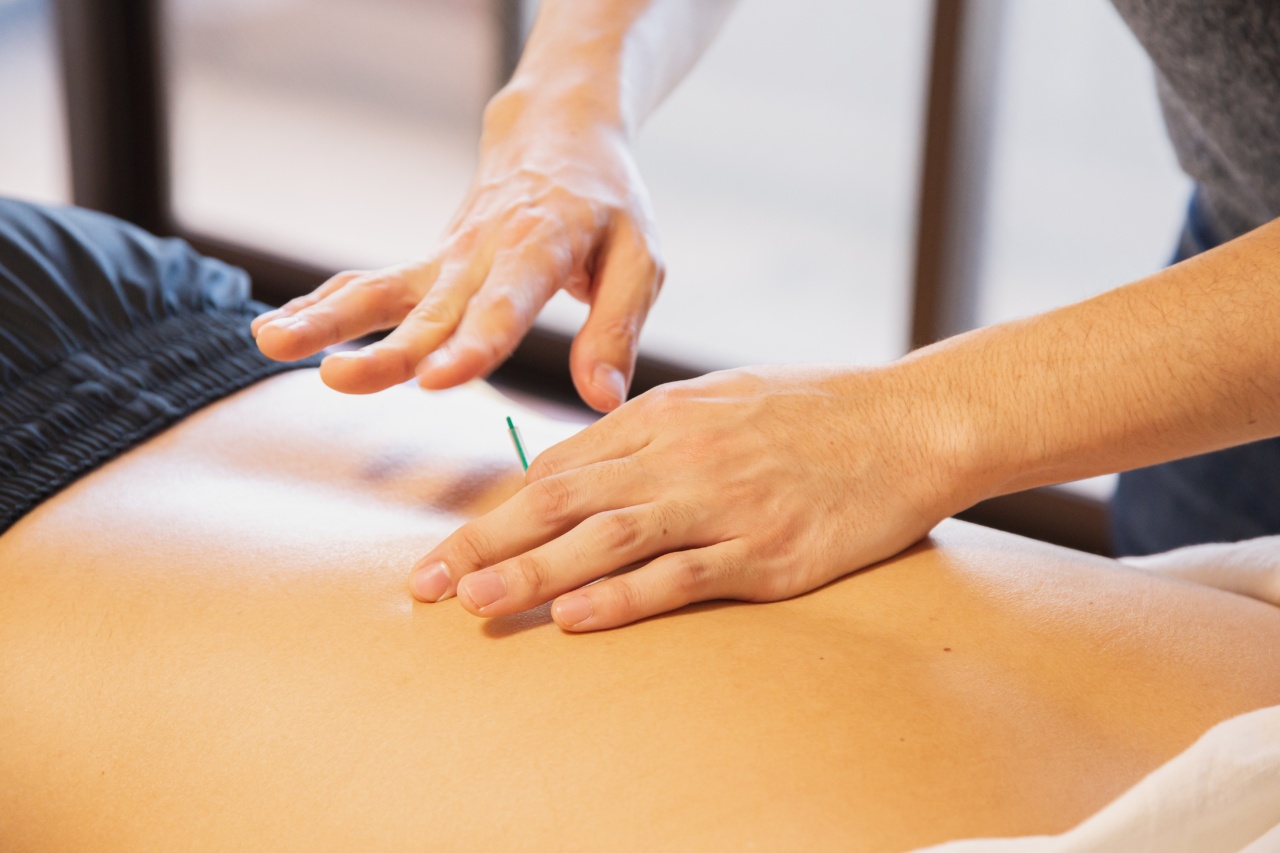Alternative medicine refers to a non-traditional approach to healthcare that involves practices and therapies that are not commonly used in conventional medicine.
When it comes to treating musculoskeletal disorders, such as joint pain, backache, and osteoarthritis, one alternative medicine that has gained significant popularity is acupuncture.
What is Acupuncture?
Acupuncture is an ancient Chinese practice that involves the insertion of thin needles into specific points on the body.
It is based on the concept of Qi (pronounced “chee”), which is the vital energy flowing through pathways called meridians. According to traditional Chinese medicine, when the flow of Qi is disrupted, it can lead to pain, illness, and imbalance in the body.
How Does Acupuncture Work?
Acupuncture is believed to stimulate the body’s natural healing processes by regulating the flow of Qi.
The insertion of needles at specific acupuncture points is thought to unblock any obstructions in the meridians and restore the proper flow of Qi. Additionally, acupuncture is believed to promote the release of endorphins, which are natural painkillers produced by the body.
Benefits of Acupuncture for Musculoskeletal Disorders
Acupuncture has shown promising results in the treatment of various musculoskeletal disorders. Some of the benefits of acupuncture for these conditions include:.
1. Pain Management
Acupuncture has been found to be effective in reducing pain associated with musculoskeletal disorders. Studies have shown that acupuncture can help relieve pain in conditions such as osteoarthritis, fibromyalgia, and low back pain.
It is believed to work by stimulating the release of endorphins, which dampen pain signals.
2. Reduced Inflammation
Acupuncture has anti-inflammatory effects that can help reduce inflammation in the joints and muscles. By reducing inflammation, acupuncture can alleviate pain, swelling, and stiffness associated with musculoskeletal disorders.
3. Improved Range of Motion
Many musculoskeletal disorders can limit the range of motion in joints. Acupuncture can help improve joint mobility by reducing muscle tension, increasing blood flow, and promoting tissue repair.
This can lead to improved flexibility and ease of movement.
4. Enhanced Sleep Quality
Musculoskeletal disorders can often cause sleep disturbances due to pain and discomfort. Acupuncture has been shown to improve sleep quality by reducing pain and promoting relaxation.
Better sleep quality can enhance the healing process and improve overall well-being.
5. Minimal Side Effects
Compared to conventional treatments such as medications or surgery, acupuncture has minimal side effects. The risk of adverse reactions or complications is low when performed by a trained and licensed acupuncturist.
Acupuncture Techniques for Musculoskeletal Disorders
There are various acupuncture techniques used to treat musculoskeletal disorders. These include:.
1. Body Acupuncture
Body acupuncture involves inserting needles at specific points on the body, away from the affected area. These points are believed to stimulate the flow of Qi and promote overall balance and healing.
2. Ear Acupuncture
Ear acupuncture, also known as auricular acupuncture, focuses on stimulating points on the ear that correspond to different parts of the body. It is often used for localized pain or specific musculoskeletal conditions.
3. Electroacupuncture
Electroacupuncture involves attaching electrodes to the acupuncture needles to deliver a small electric current. This technique is thought to enhance the effects of acupuncture and provide additional pain relief.
4. Cupping
Cupping therapy involves placing cups on the skin to create suction. This technique can help release muscle tension, improve blood flow, and promote healing in musculoskeletal disorders.
Is Acupuncture Right for You?
While acupuncture has shown promise in treating musculoskeletal disorders, it is important to consult with a qualified healthcare professional before starting any alternative treatment.
Acupuncture may not be suitable for everyone, especially those with certain medical conditions or who are taking specific medications.
Conclusion
Acupuncture is a popular alternative medicine technique that can be beneficial for individuals with musculoskeletal disorders. It offers a natural and holistic approach to pain management, inflammation reduction, and improved overall well-being.
However, it is essential to consult with a qualified acupuncturist or healthcare professional before undergoing acupuncture treatments for musculoskeletal disorders.































